cannabis 101
Learn everything you ever wanted to know about your cannabis. From the plant to the laws, we’ve got you covered.
The Plant
It’s just a flower
When you get down to it, cannabis is an annual flowering plant which is cultivated in many different genetic varieties, called strains. Its flowering buds are coated in sticky, aromatic glands called trichomes, which are resinous structures that give buds their “frosty” look, while producing and storing the plant’s psychoactive compounds such as terpenes and cannabinoids.

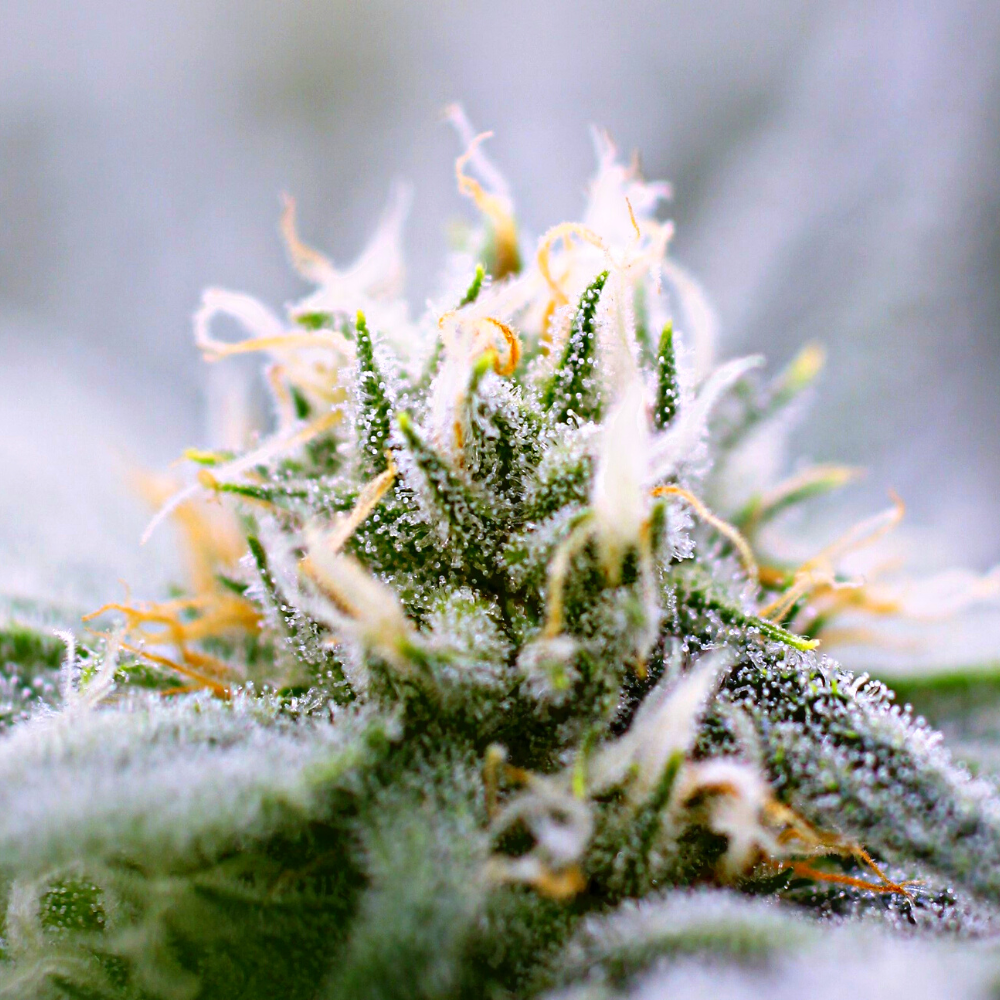
TERPENES
If you know what weed smells like, you’ve already experienced terpenes. They are the aromatic compounds found in plants and flowers that make up the unique scent of cannabis and contribute to its flavor.Terpenes also shape the expression of the THC high, which results in the wide spectrum of different effects that can be experienced by various strains. Learning about terpene profiles can help the consumer understand the connection between the aroma of cannabis and the experience it may offer.
For example, strains that have a lemony scent are generally found to be high in the terpene limonene (found in citrus fruits) which tends to produce very uplifting, happy effects when consumed. These types of strains tend to be classified as sativas, partly for this reason. This leads to the idea that you could theoretically understand terpenes to the point that you could simply smell a strain and take a good guess at what kind of effects you’ll get from it.
Much of the subjectivity of cannabis comes from the diverse reactions to terpenes. Like in the case of aromatherapy, scents tend to provoke emotional responses and can produce individualized mood-altering effects.
CANNABINOIDS & THE ENDOCANNABINOID SYSTEM
Our body contains a vast network of cell receptors, enzymes, and chemical signals called the endocannabinoid system, or ECS. This system maintains balance in our body, regulating and controlling our most essential bodily functions, such as memory, sleep, mood, temperature control, pain processing, inflammation/immune response, and appetite. Our body produces endocannabinoid molecules, which are chemical compounds that stimulate the ECS receptors to regulate our bodily functions, controlling activity levels like a traffic cop. The cannabis plant, which humans have been using for thousands of years, also contains cannabinoids. They have similar structure to endocannabinoids, and interact with the same receptors to produce the cognitive and physical effects that we experience when we consume cannabis.
While THC and CBD are the two best known cannabinoids (as well as the most abundant) there are over 100 different compounds to be found in cannabis. They all work together (along with terpenes) in synergy to produce what is known as the entourage effect. This concept refers to the idea that these compounds are the most effective when they are together.
Some of the more well-known and commonly consumed cannabinoids:
𝚫 9 THC: The activated form of THC. It is the cannabinoid that is typically attributed to the plant’s psychoactive effects, and produces a “high”. THC has biphasic properties, meaning that low and high doses can produce opposite effects. Can help with pain relief, appetite stimulation, nausea, mood, and sleep.
CBD: A non-intoxicating cannabinoid that can be helpful for anxiety, inflammation, and pain.
CBG: A non-psychoactive cannabinoid found to be helpful for stimulating appetite, inflammation, and pain.
CBN: Found in many “sleepy” edibles, a sedative cannabinoid that forms when THC degrades usually due to exposure to heat, air, or light. CBN can also help stimulate appetite and relieve pain.
THCV: Mildly psychoactive cannabinoid that tends to be energy and mood boosting, appetite suppressing, and anxiety-reducing.
Cannabinoids exist in an activated and unactivated form. For example, THCA is unactivated THC. Introducing heat to THCA reconfigures the molecule, turning it into THC, and allows it to be readily used by the body. THCA will be found in high concentrations in cured flower, and converts to D9THC when smoked/vaped; edibles are made with D9THC because it is fully activated and able to be used by the body.
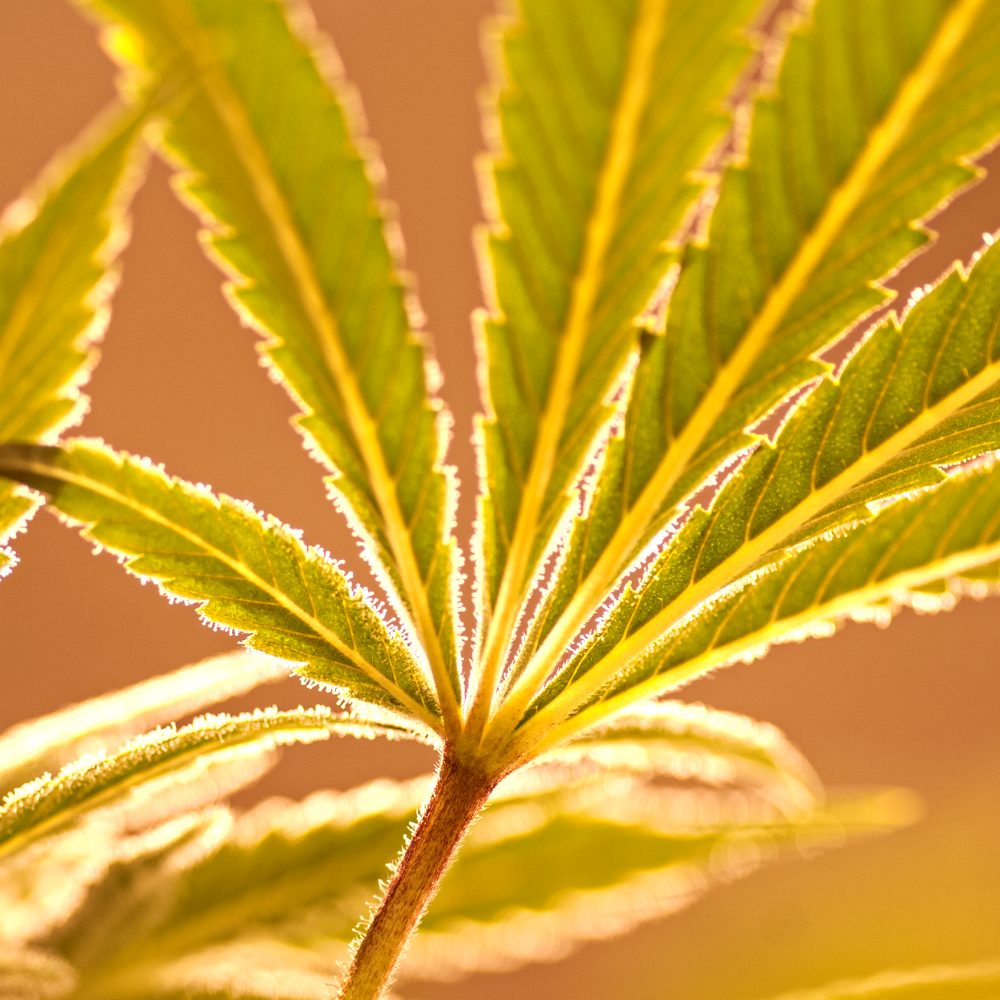

GENOTYPES & PHENOTYPES
Genotype refers to the genetic possibilities of a strain, from cannabinoid content, terpene profile, visual appearance, and more. Phenotype is the expression of physical characteristics in the plant which results from the genotype (genetic code) combined with the impact of its environment. This relates to the fact that identical twins may have the same genetic code, but because of environmental factors, grow to be unique individuals. Having a genetically related strain does not mean you’re getting the same high. The growing conditions, nutrients, and even curing techniques can produce different results. Cannabis cultivators will use numbers to differentiate the multiple phenotypes of the same strain, like Gorilla Glue #4.
THE SPECTRUM: SATIVA, HYBRID, AND INDICA
Throughout the world, climate and environment impact the chemical and physical characteristics of cannabis. The terms indica and sativa were introduced in the 18th century to describe different species.
Cannabis Sativa used to refer to the tall, slender, CBDA-producing hemp variety cultivated in Europe and Central/South America for fiber and seeds.
Cannabis Indica used to refer to the short, bushy, psychoactive variety discovered in India that produces mostly THCA and was cultivated for its hashish production.
Over time, breeders have repeatedly cross-pollinated these different varieties to produce the amazing array of strains that we see in the current market. Today, nearly all strains are hybrids of the two types and tend to lean one way or another. Despite this, the terms indica and sativa are commonly used today to categorize varieties of cannabis and the spectrum of their effects.
Today, Sativa refers to tall, narrow-leaf varieties of cannabis known for producing cerebral, uplifting “head” highs. Their stimulating qualities make Sativa strains popular for daytime use, social gatherings, physical activity, and creative projects. Sativas will not give you energy like a cup of coffee, but instead help focus, invigorate and avoid the “couch-lock” effect that an Indica tends to induce.
The term Indica has come to describe stout, broad-leaf plants from which users can expect a relaxing, body-heavy “stoned” feeling which stands in contrast to a Sativa “high”. The calming qualities of Indica strains are desirable for evening use, helping with sleep, pain relief, stress, nausea, and inappetence.
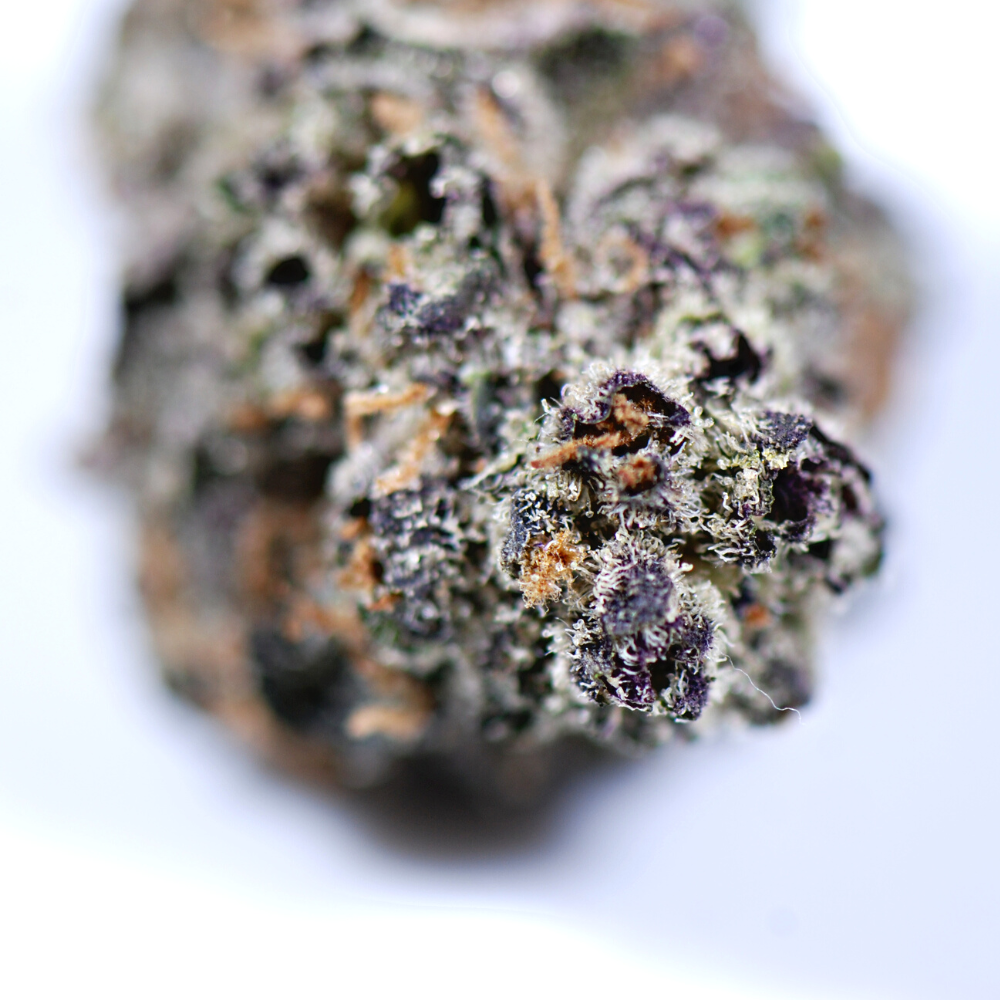
EVERYBODY IS DIFFERENT
There is more to it than that, though! Designating a strain as Sativa, Indica, or Hybrid isn’t the only determining factor of your cannabis experience. Instead, these terms simply act as shorthand for where a strain falls on the spectrum of effects. A strain’s chemical composition must be taken into consideration, including the terpene profile and cannabinoid content. Other factors also come into play, such as consumption method and dosage. Moreover, there are many internal, biological factors that can affect a user’s experience, a concept which is referred to as biochemistry.
BIOCHEMISTRY
Everyone has that one friend who can drink coffee all day with no ill effects, or gets drunk off of just one beer. Cannabis use is subject to the same inconsistencies. Like snowflakes, everyone’s biological makeup is completely different and the variables can be based on a large number of factors (lifestyle, diet, illness, stress, THC tolerance, physical size, other drugs). Because of this, no two people will have the same response to the same strain. Our ever-changing biochemistry has a huge impact on how our endocannabinoid system works, and therefore how cannabis interacts with it. In the end, cannabis use is highly subjective, and everybody and every body is different.
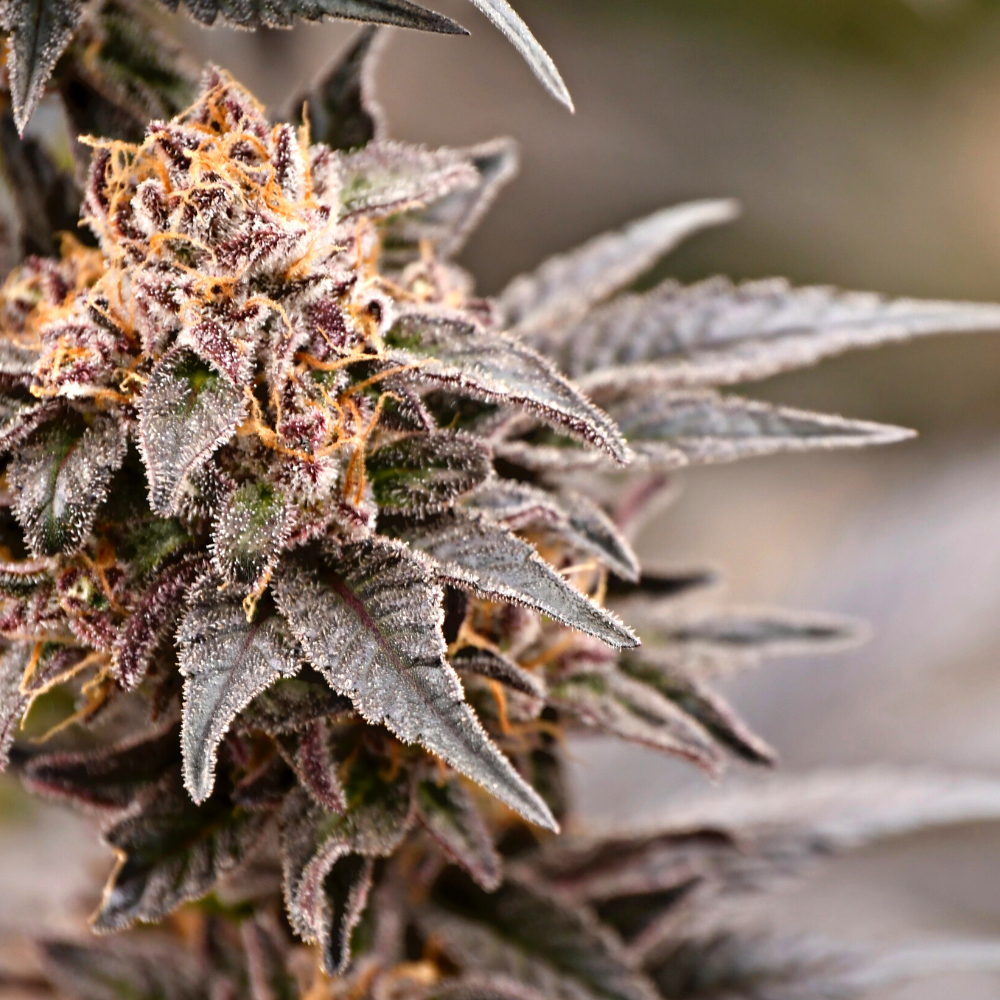
COMMON MISCONCEPTIONS
HIGH THC=A HIGHER HIGH: Many consumers shop for strains that are high in THC, with the belief that those strains will produce a stronger high. Though THC is part of that equation, it is by no means the most important factor in quantifying the quality of your overall experience. A strain can have extremely high THC content but still not produce the desired effects, while a low THC content can oftentimes produce a more effectual high because of accompanying factors like terpenes and minor cannabinoids.
SAME WEED, SAME HIGH: Every individual’s physiology is different, meaning that no one will experience the same strain in the same way.
CBD=NO HIGH: CBD works to temper THC as opposed to hinder its potency. Many consumers think that CBD will cancel out the high from THC. False! What CBD does is moderate the THC and allows for more manageable effects, like curbing an anxiety response or limiting the munchies.
Products & methods
From seed to sale, all the products we carry are made in Massachusetts. They are thoroughly tested for potency and contaminants, and are labeled with info regarding cannabinoid content. We support a great number of local cannabis brands, many of whom engage in organic growing practices. A cannabis product’s potency is measured in TAC (Total Active Cannabinoids). For flower and concentrates, this is displayed in a percentage, and for edibles, in milligrams (mg).
Consuming cannabis used to be straightforward! Today there are many different consumption methods and a vast array of products to choose from.
Flower
Method: Smoking or Vaping
Onset: Less than 5 minutes
Duration: 1-3 hours
What is it? Smoking involves using flame to combust cannabis flower in pipe, bong, joint, etc. Vaping heats flower to a point below combustion using an electronic device, activating the compounds and producing vapor.
How much? Beginners start with a few puffs.
How does it work? Active compounds are absorbed directly into the bloodstream through lungs.
When we say flower, we mean the bud itself. You may know it by a variety of terms (weed, pot, sticky icky…). We carry a wide selection from a variety of top cultivators in the state.
The characteristics will vary between brands, with each manufacturer using different cultivation, trimming, curing, and packaging techniques. Flower will be identified as being of a certain strain, which will be an indicator of its genetic lineage and general known effects.
We carry whole flower in a variety of packaged weights such as 1g, 3.5g, quarters, halves, and whole ounces. We also carry some pre-ground options. To keep your flower freshest, store in an airtight container. A cool, dry, place away from light is the best way to ensure the buds maintain their integrity. Humidity packs like Boveda can be helpful in maintaining longevity.
Pre-rolls, or joints, are also very popular options.They are relatively inexpensive, convenient, and allow for you to try new strains with little commitment. They can come in Singles, or multi-packs, and also vary in weight (0.3g, 0.5g, 1g).
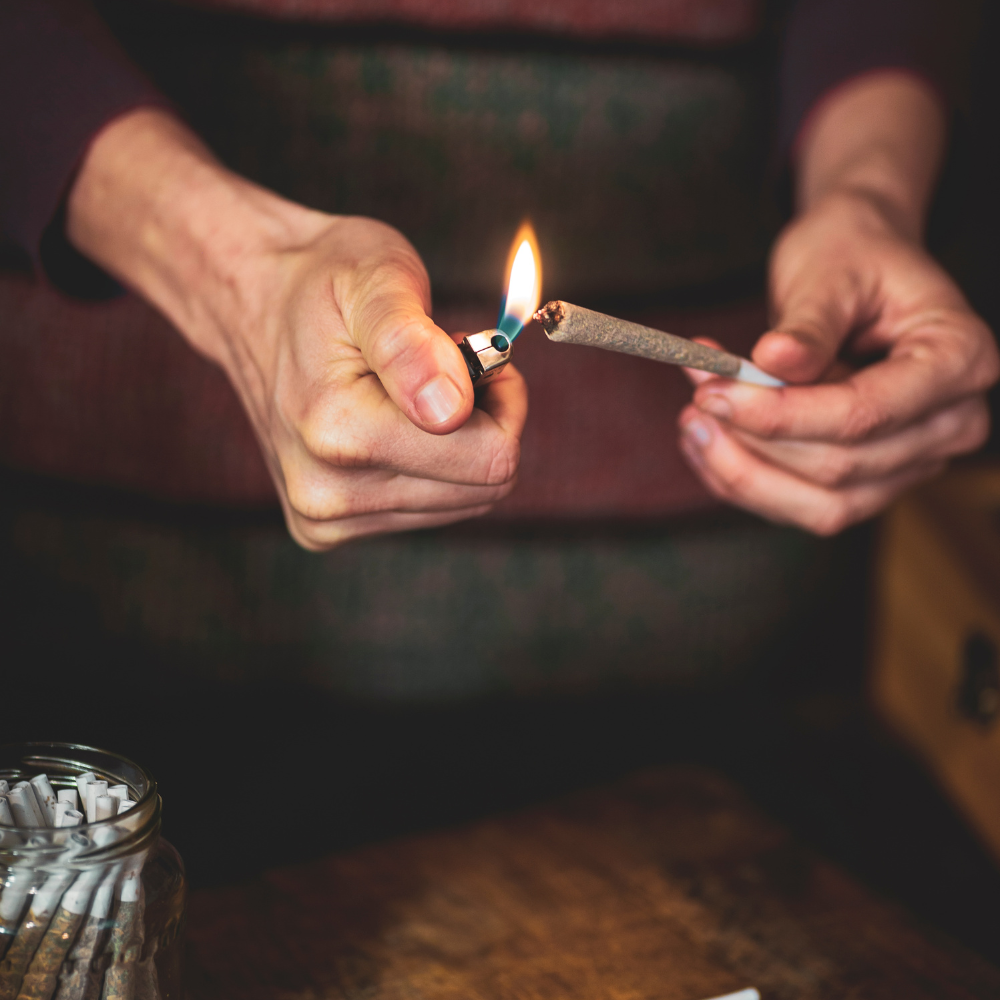
CONCENTRATES/VAPES
Method: Vaping
Onset: Less than 5 minutes
Duration: 1-3 hours
What is it? Vaping/Dabbing heats concentrates to a point below combustion, activating the compounds and producing vapor.
How much? Beginners start with a half-grain of rice size amount, or a few puffs of a vape.
How does it work? Active compounds are absorbed directly into the bloodstream through lungs.
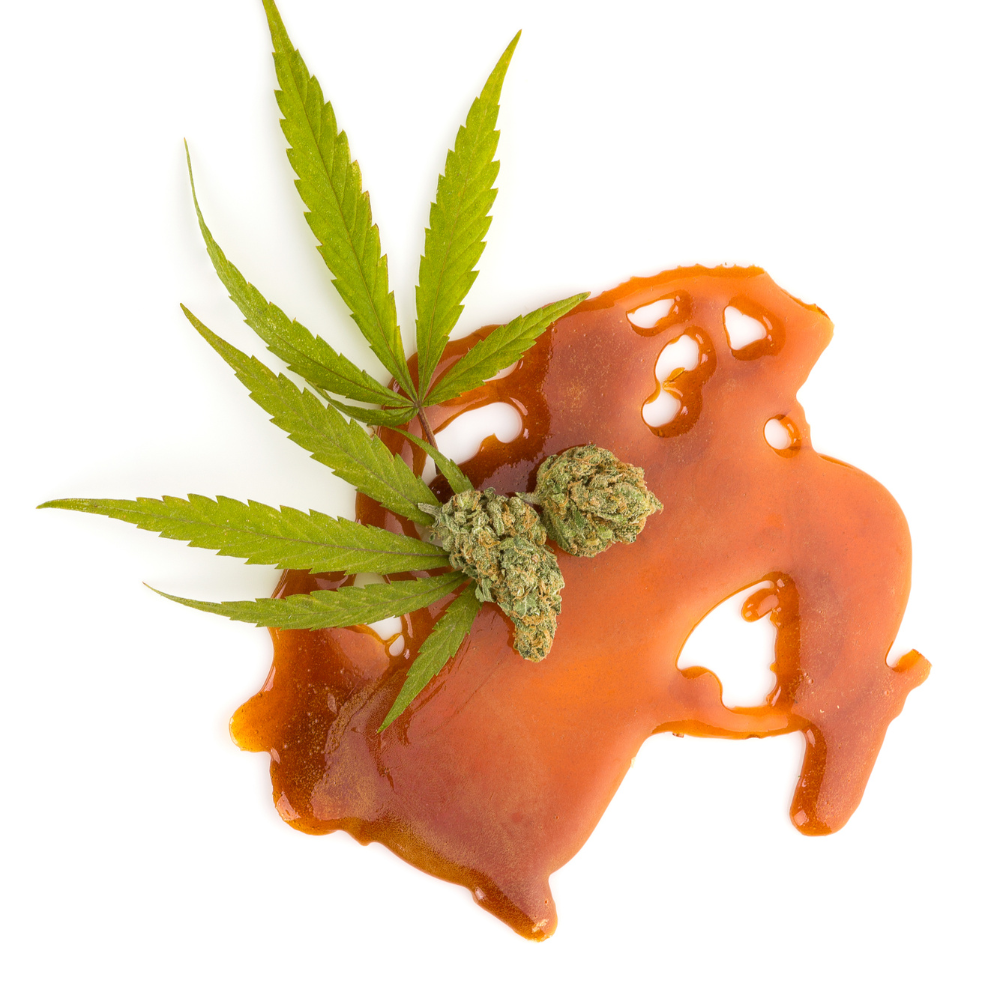
CONCENTRATES
Cannabis concentrate is a condensed accumulation of the plant’s trichomes, or resinous oils, that have been stripped from the plant matter. It is the most potent form of cannabis as it contains the highest concentration of cannabinoids.
You may hear the terms extract and concentrate used interchangeably, but there is an important difference between the two. Extracts are a type of concentrate that are made using a solvent such as alcohol, ethanol, CO2, or butane. The solvents are purged from the final product, leaving a very pure, flavorful concentrate behind. Full-spectrum extracts are derived from gentler processes that preserve many terpenes, cannabinoids, and flavonoids, meaning the taste and effects will be native to the strain it was derived from. These types of extracts offer a more flavorful, well-rounded, and therapeutic experience, as it encourages the entourage effect. Distillate extracts are nearly the opposite, as they involve removing all other cannabinoids and terpenes in order to “distill” out the targeted cannabinoid (usually THC). They will offer a potent high, but limited nuanced effects, as they do not contain other compounds.
You may also see the term “live” in relation to concentrates. Live concentrates refer to extracts that have been made using live, flash-frozen plant material instead of dried, cured plants.
Some of common extracts:
Wax, Shatter, Budder, Badder, Sugar: Full-spectrum concentrates occurring in a variety of textures using a variety of extraction techniques (butane, ethanol, or CO2)
RSO: Whole plant, full-spectrum cannabis oil made with alcohol as a solvent. Very therapeutic applications.
Solvent-less concentrates are made using mechanical or physical means such as heat and pressure, or ice and water. These include hash rosin, bubble hash, kief, and traditional hash, and cannot be vaporized like solvent-based extracts.
Dabbing is the most common consumption method for concentrates, which is why you’ll often hear concentrates referred to as “dabs”. It involves using a small water pipe similar to a bong, called a rig. Attached to the rig is a glass or quartz receptacle called a banger that is superheated using a small butane torch to high temperatures that will vaporize the concentrate once it is applied to the surface. Concentrates can also be consumed using:
-Electronic devices that contain a chamber where the dabs are inserted and then electronically heated; handheld versions are sometimes called “dab pens” and desktop versions are known as “e-nails”.
-Nectar Collectors: Quartz straws that are heated at the tip then applied directly to a concentrate and inhaled.
-Applied to a bowl/joint. Though it is not the optimal use for concentrates, they can enhance your experience when added to your flower.
Vaping concentrates allows for a more potent high, with faster onset and shorter duration compared to smoking flower. Users also usually experience a much fuller flavor and terpene-rich aromas. There is a bit of a learning curve when it comes to consuming concentrates, as well as some associated risks.
VAPES/CARTRIDGES
Cannabis oil cartridges are usually made with distillate, but are also available in full-spectrum, live resin or hash rosin options. The cartridge is a glass chamber filled with oil that is attached to a battery, which is an electronic device that heats the atomizer of the cartridge, vaporizing the oil. Vaping is a potent, portable, and discreet option, and offers a fast onset and a short duration compared to smoking flower.
510-threaded cartridges are the most common on the market; widely produced and able to fit a wide array of batteries matching that thread size. Other proprietary vaping series include PAX pods and CLIQ pods, which only fit their respective devices.
EDIBLES
Method: Ingestion
Onset: ~1/2-4 hours OR ~15-45 minutes for fast-acting
Duration: ~3-6 hours for standard edibles and 1-3 hours for fast-acting
What is it? Concentrated, activated cannabis oil is used to infuse a variety of tasty treats. From gummies and chocolates to beverages and more!
How much? Beginners should start with 2 to 5mg. Wait for full effects and do not re-dose. Stay hydrated and do not take on an empty stomach.
How does it work? Active compounds are absorbed through the digestive tract and liver and metabolized which can lead to a powerful, full-body psychoactive effect.
Edibles sold in the MA recreation market cannot be more than 5mg per piece, which is considered to be a typical dose size. The long onset time and duration are important to note, because depending on several biological factors, effects can sometimes take up to 2 hours to fully kick in. Edibles will result in a high that is not only stronger than inhalation methods, but also completely different in character. They offer a potent, body-dominant high, and should be consumed with some caution. We advise to start low and go slow. There are a huge variety of options when it comes to edibles nowadays. They come in many forms, such as chocolates, gummies, beverages, mints, baked goods, and more. Fast-acting versions are also hitting the market, offering a quicker onset time than your typical edible. Though many are made with distillate, full-spectrum options are becoming increasingly popular and give far more therapeutic effects. Some producers are adding other holistic medicines, such as valerian or melatonin for a sleepy effect, and ginseng or guarana for a more energized vibe. Because there are so many options out there, we highly recommend discussing our menu with one of our experienced budtenders!
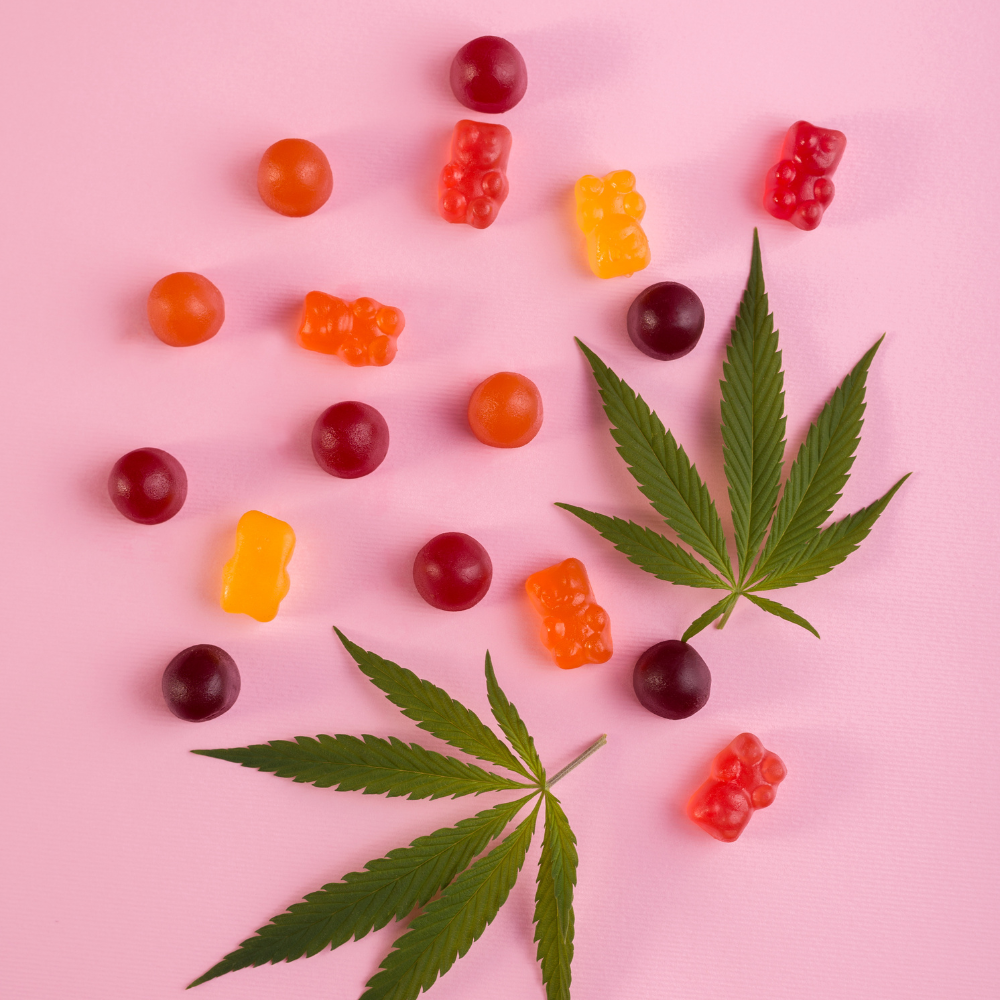
TINCTURES
Method: Sublingual/Consumption
Onset: 15 min-2 hour
Duration: 2-4 hours
What is it? Cannabis infused alcohol or oil for oral administration.
How much? Beginners start with .25-.5mL depending on concentration. Dispense recommended amount under tongue and hold for 60sec.
How does it work? Taken sublingually (under tongue), active compounds get absorbed into the sublingual artery which can give faster effects than standard edibles, with more cerebral effects.
Tinctures are a great option for someone looking for effects that are closer to that of flower, but want to avoid inhalation methods. They are easy to take, and can easily be scaled up or down to accommodate dosing needs, a concept called titration. Holding tinctures under the tongue can bring a faster onset, as it bypasses the digestion process required for edibles.
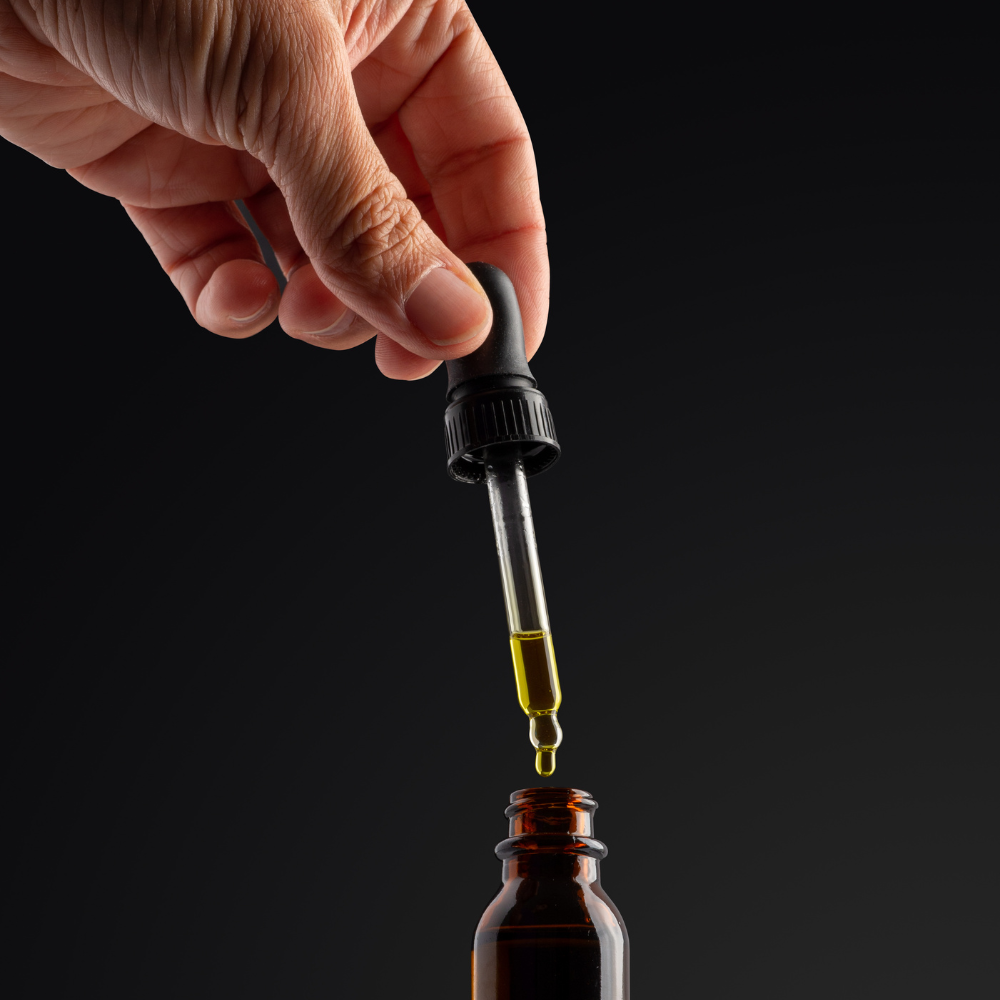
TOPICALS
Method: Topical Application
Onset: 15-30 minutes
Duration: 1-3 hours
What is it? Cannabinoids infused in a topical carrier like ointment
How does it work? Topicals are a non-psychoactive delivery method. Carrier would be massaged into a localized area, where the cannabinoids get absorbed into skin. Not absorbed into the bloodstream.
Topicals are helpful for localized pain relief, and a great option for those who are new to cannabis or skeptical about using. They do not give psychoactive effects because they are not absorbed into the bloodstream, but instead stimulate the receptors in the skin. It is recommended to wash and dry the area you intend to apply to, and then thoroughly massage until fully absorbed.
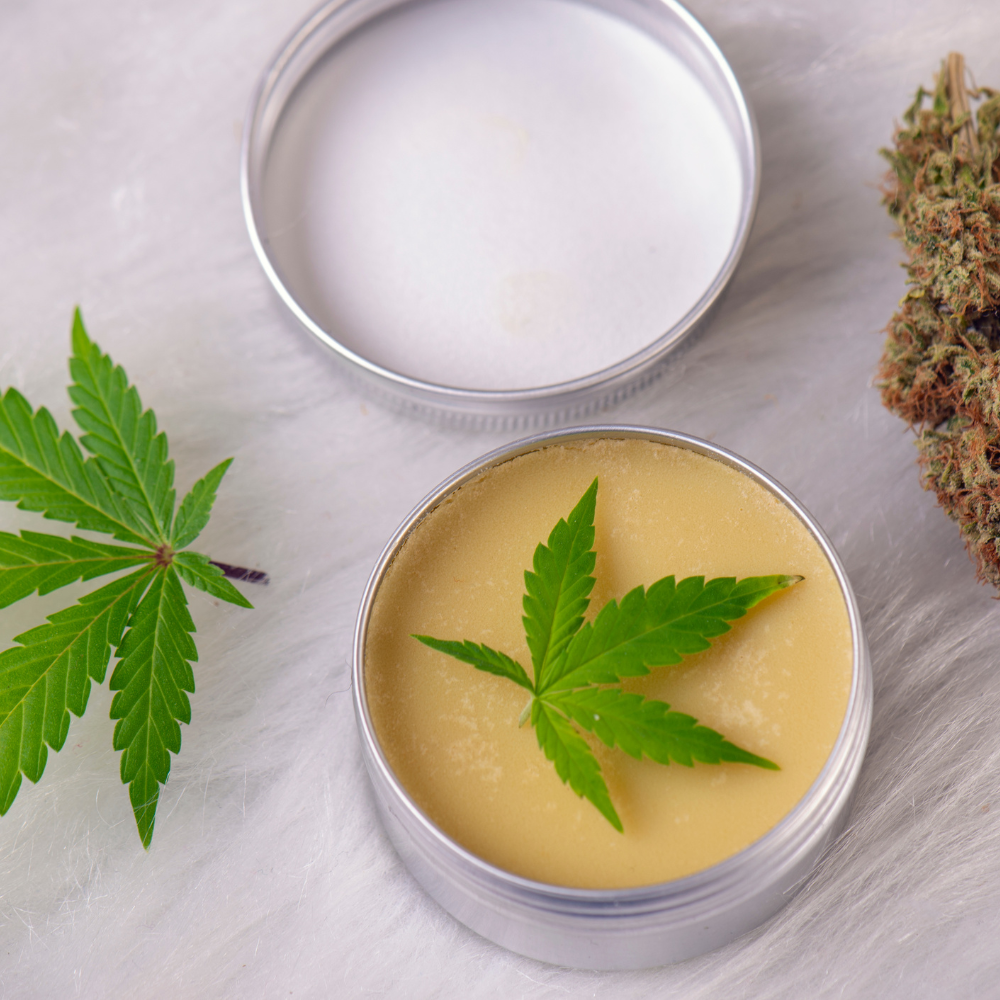
The advice
START LOW, GO SLOW
Cannabis use is highly subjective and will vary greatly by consumer!
Everybody and every body is different.
Consumers with limited cannabis experience should start with the smallest recommended amount. When it comes to flower, it is better to start with a lower-testing strain to determine tolerance and preference.
Track it
Keep a log of products used, strains, and effects experienced in order to understand
what works best for you. Be in tune to your body and how cannabis is making you feel!
Try CBD
CBD has become nearly as popular as THC in recent years, being touted for its therapeutic potential. There are many products to be found that contain CBD in addition to THC, which is a great option for those who aren’t looking for a strong high but still want to experience the benefits of cannabis, as it helps to produce a more moderated, balanced effect. Though CBD on its own isn’t generally as effective as when it is working in synergy with its sister compound, THC, we do carry pure hemp-derived CBD products for consumers who are looking for this option.
Too much?
It happens to the best of us! If you overdo it on your dosing, just stay calm, and know that the effects will pass with time. It helps to take some deep breaths, drink water, lie down, and listen to some music. For the best experience, we recommend partaking in cannabis products in the comfort, safety, and privacy of your home.
The laws
WHAT IS ALLOWED?
You are allowed to gift up to 1oz of flower or its equivalent to adults 21+.
Adult-use consumers can purchase 1oz of cannabis flower or its equivalent per day, and can possess up to this amount on their person. Violations may be punishable by $500 fine and up to 6mo imprisonment.
In the home, consumers may possess up to 10oz or its equivalent. Any amount over 1oz must be secured by a lock. Violations may be punishable by civil penalty of $100 and forfeiture of product.
WHAT IS NOT ALLOWED?
It is illegal to sell cannabis to another individual or to furnish cannabis products to a person under 21 years of age. Violation punishable by a fine of not more than $2000 or by 1 year imprisonment or both.
It is prohibited to use cannabis in any form in public or on federal land.
You cannot travel with an open container of cannabis products. It must be kept in a secured area of the vehicle.
You may not travel across state lines with cannabis.
Driving or operating machinery under the influence of cannabis products is illegal, pursuant to MGL c. 90, § 24.
WHAT ARE THE RISKS?
Cannabis products are not approved by the FDA. There is limited information available on possible side effects, and there may be health risks associated with its use. We encourage consumers to educate themselves on potential risks associated with cannabis use.
Keep cannabis products away from children and pets. Store your cannabis in child-proof packaging.
If you think a child has ingested cannabis, contact your local Poison Control Center at 800.222.1222.
If you think your pet has ingested cannabis, contact your veterinarian right away.
If you are pregnant, breastfeeding, or plan to become pregnant soon, leading medical advice suggests that you do not use cannabis, as it may expose the developing baby to potentially harmful substances.
Cannabis, like any other substance, has the potential to be abused. Some long term cannabis users report mild symptoms that make quitting difficult. Some signs include:
- Neglecting responsibilities at work/home/school
- Consuming under unsafe circumstances
- Increased tolerance
- Consuming to avoid withdrawal symptoms
- Changes in personality or attitude
If you or someone you know needs help with substance abuse, visit https://helplinema.org or call 800.327.5050





